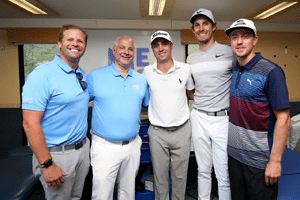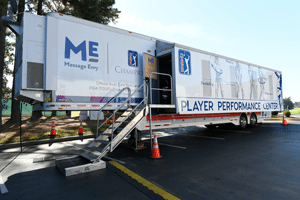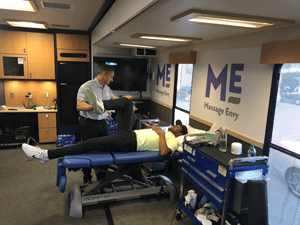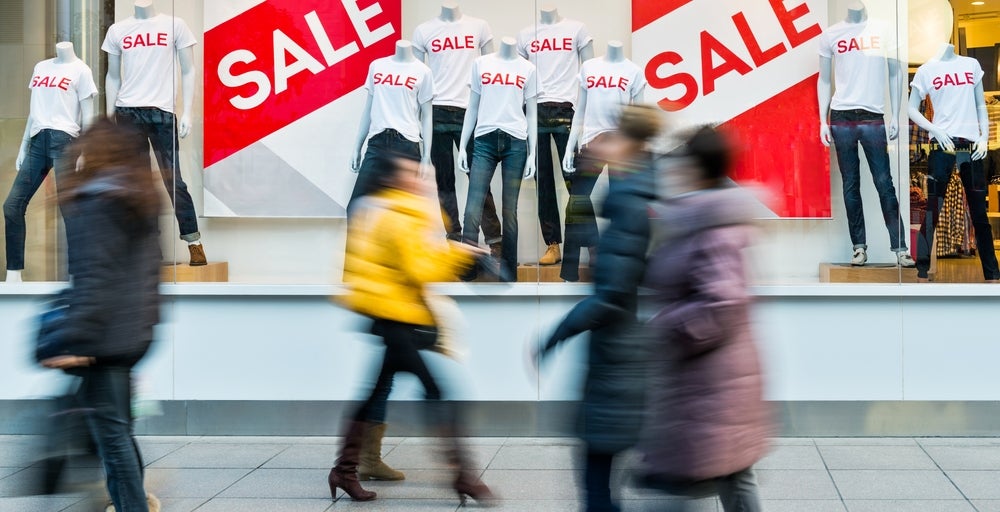Massage Envy has hit the links, jumping into its first sports sponsorship of any kind.
After reaching a four-year agreement last year to become Official Sponsor of the PGA TOUR and Official Total Body Care Sponsor of the Player Performance Center, a mobile training and wellness hub for its golfers, the brand signed 10 golfers, including star Justin Thomas.
Ahead of The Players tournament this past weekend, Massage Envy’s senior vice president of marketing Derek Detenber sat down with sports sponsorship consultant Evan Vladem to discuss the brand entering the world of sports, key learnings from the first year and how they plan to move forward.

EVAN VLADEM: Tell me why you looked to sports as a marketing platform?
DEREK DETENBER: The dynamics of our marketing was heavily centered on a female consumer. When we started looking at the consumer data, though, we found the opportunity existed in more of a 50/50, male-female split. When you have a brand that has been heavily marketed towards females you have to do something to really shake it up. You can’t just wake up one day and say, “Oh, by the way, we are a male brand today.” That was the push to start looking at sports in general.
More on Sports Sponsorships:
- Northwestern Mutual’s First CMO on Partnering with March Madness
- NASCAR Expands in Esports Forming Youth Racing Series
EV: You were front and center in negotiating and landing the deal with the PGA Tour. Tell me about how that came to fruition and why golf was the landing spot?
DD: When we started having conversations with different leagues and properties, I wanted to talk to the PGA Tour because I felt like [the Players Performance Center] was an aspect of what they could offer us that was unique versus any other sports property.We are an experiential brand. I really wanted something that was as authentic as we could possibly get.
EV: What goes on at the Players Performance Center?
DD: Massage rehab, stretching—those things were already happening. So if we could go in, sponsor that as an asset, train the physical therapists and trainers that work in the center around our methodology and our thought process, I felt that we could get as close as an endemic sponsor that you can get in golf, similar to equipment and apparel. That’s what really played into helping us get to a more of a male-bias marketing program. We can do it in an authentic way and tell stories around what was going on among the Tour and the Tour Pros that really related to our business.
EV: What were the conversations like internally? Did you have to convince the powers that be on the true power of sports?
DD: Every sports deal that I have ever done there is always a little bit of inertia or potentially even resistance. It is expensive. Sometimes it is hard to measure the return on investment, but for us I think the catalyst was that, at the same time, we were launching a new service called Total Body Stretch. This is an assistive stretching service and we were the first brand to take it nationally. We got over the value discussion relatively quickly because we felt the PGA Tour would be a very big launch for us.
EV: You signed 10 professional golfers as brand ambassadors. And they’re big names, which include Justin Thomas and Henrik Stenson. Tell me about the power of individual athlete brands and being able to leverage that on social media and in the media?
DD: That was really the most fun part of putting this whole structure together. I was looking more for content and storytelling than I was for logos on apparel or bags or things like that. So in putting the player roster together I was looking for guys that had stories.
Justin Thomas is a small guy but he hits the ball a mile and the story was already built in about how flexible and mobile he is with his body to be able to do the things he does on tour. That fits perfectly with the type of story we are talking about with Total Body Stretch, a service that allows you to be more flexible and mobile. If it’s good enough for Justin, then it’s got to be good enough for the weekend warrior. With a guy that is a bit older like Stenson (42), he’s trying to maintain that body through the back half of his career. That’s a different kind of story that we are trying to tell.

EV: You had logos on the trailers at the Player Performance Centers, you also produced a commercial with Justin Thomas that you’re pushing on social media. In your opinion, what’s the most valuable asset within the sponsorship?
DD: I think it is two-fold. One is very tangible and one is intangible and maybe unique to Massage Envy. The tangible thing is the uniqueness of the PGA Tour relative to other sponsors or platforms and I have worked on deals with NFL, Major League Baseball and the NBA. The PGA Tour and its players have this intimate link to each other. What you get when you do a deal with the PGA Tour is a lot of different types of equity that you can borrow to put against your brand. It potentially gives you a bigger platform then some of the other sports properties. For me, the value is the collection of assets you can get from the PGA Tour, it’s not just one or two things.
EV: What is the intangible aspect?
DD: It’s uniqueness to Massage Envy, as a franchise network, some of the most powerful things you can do and from a marketing standpoint are splashy types of partnerships that can get the franchisee’s engaged and excited about the business. In the franchise world engagement by the franchisees means everything. When we announced the sponsorship a year ago at our annual conference, we got a standing ovation. That is almost an immeasurable impact if you can get the franchisees engaged in your business.

EV: You are now entering year two of the four-year deal. What are you adding to the deal to amplify your activation?
DD: At the Players we filmed another set of content that will end up being both television commercials, as well as social content. Honestly, the biggest opportunity that we have going in to year two is how we bring all of the assets down to a local level for activation. That activation could be on site at tournament locations, but it also could be in your community. I think something that is very unique about golf is that unlike an NFL team or other sports golf is played by many weekend warriors every Saturday and Sunday. The question is how do we bring the Massage Envy brand, our partnership with the PGA Tour and our ambassadors to your local club and into your local communities so that people understand that we are partnered. The next level down is how we get a little bit deeper into the local community and local activation.
EV: I couldn’t end this interview without a Tiger Woods question. Has his return within the last year, helped with the sponsorship of Massage Envy and the PGA Tour?
DD: If Tiger is in the mix it is good for golf. The PGA Tour is happy and the sponsors are happy when he is in the mix. I think what is unique for us is he has a press conference every week. People were talking about his back and he has messaged the idea of flexibility and mobility. Those are the same things that we are getting out through our own PGA Tour ambassadors messages and he is kind of carrying the message too. I have seen an increase dialogue around the idea of body care and what the guys on the PGA Tour are doing to take care of themselves.
EV: Last November, allegations surfaced surrounding some Massage Envy therapists. Massage Envy responded by implementing major changes nationally to further protect customers. In light of the negative media attention has the PGA Tour sponsorship helped mitigate some of that?
DD: From a marketing communications stand point, I think our strategy coming out of that “event” largely remained the same. We think what we are doing is the right thing. I think golf and the type of human improvements that we are talking about, along the lines of total body care and reinventing the brand for its next chapter, all of that remains the same.
In addition, some of the golfers on the Massage Envy roster had won tournaments right around that period of time. Those things suddenly helped getting positive messaging about the brand out into the environment. I think the “event” gave us something that we had to address from an industry stand point but, in a lot of ways, it reaffirmed what we were doing from a marketing and marketing communications stand point.



